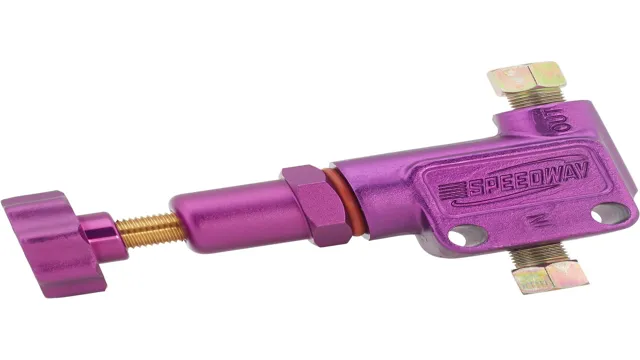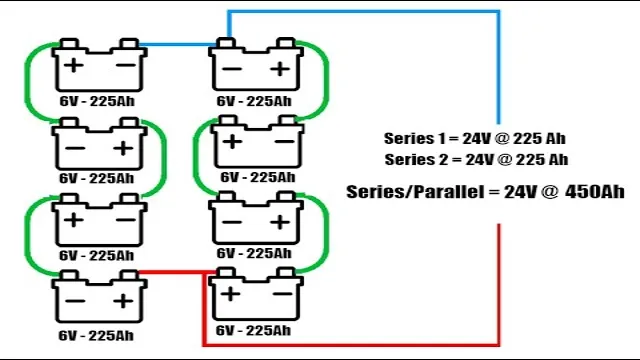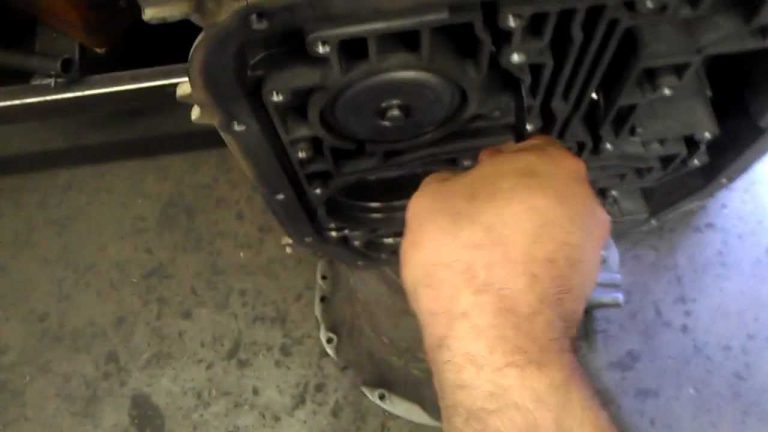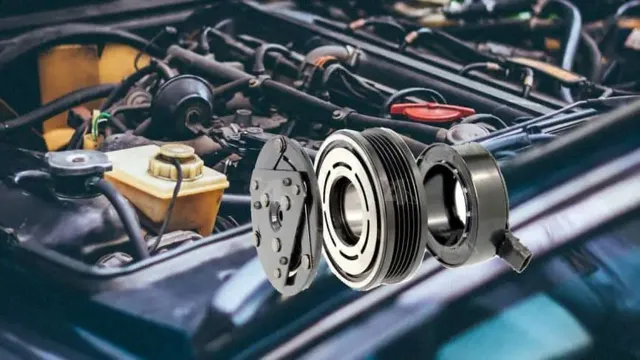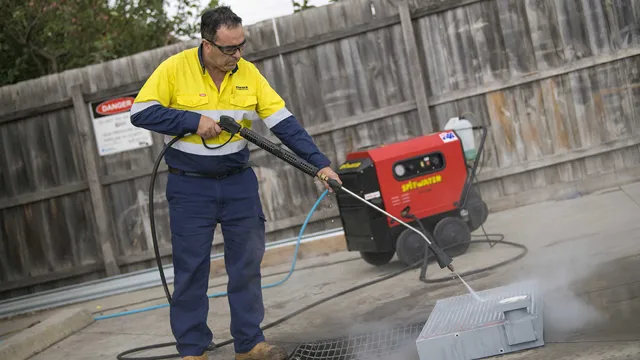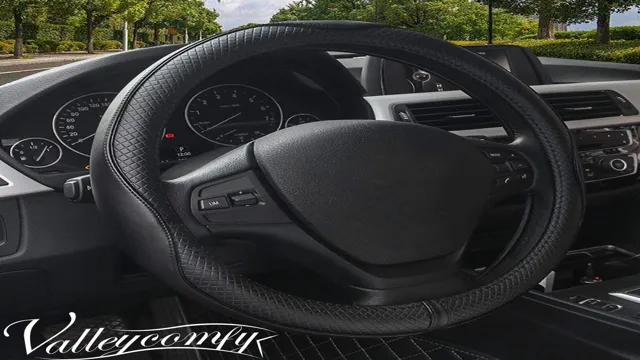Mastering the Brake Proportioning Valve: A Step-by-Step Guide to Perfecting Your Braking System
Adjusting brake proportioning valve may not be the most straightforward task when it comes to your vehicle’s maintenance, but it is a critical one that can affect the overall safety and performance of your brakes. If your car has a brake proportioning valve, it means it features a split hydraulic system that distributes brake pressure between the front and rear brakes differently. The proportioning valve’s job is to adjust the pressure applied to the rear brakes, depending on their overall braking power.
When it’s working correctly, braking feels natural, and your car stops efficiently. However, if it’s out of adjustment, you may experience a mushy brake pedal, reduced braking power, and even uneven brake wear. Knowing how to adjust the brake proportioning valve can increase your vehicle’s performance and safety on the road.
If you’re not familiar with how to do it, don’t worry. In this blog post, we’ll explain all you need to know about adjusting the brake proportioning valve accurately. So let’s get started!
What is a Brake Proportioning Valve?
If your car’s braking system is not working as it should, you might want to take a look at the brake proportioning valve. This valve is responsible for controlling the hydraulic pressure that goes to each of the wheels in order to ensure that the brakes work evenly. Sometimes, the valve might need to be adjusted in order to ensure that the right amount of pressure is going to each wheel.
To adjust brake proportioning valve, you will need to locate it under the car and then turn the adjustment knob until the right amount of pressure is achieved. It is important to note that adjusting the brake proportioning valve can be a complex task, so it is always best to seek the help of a professional mechanic. Incorrect adjustment can lead to poor brake performance, which can be dangerous.
With the right adjustments, however, your brakes will be able to function smoothly and reduce the risk of accidents on the road.
Function and Importance of Brake Proportioning Valve
A brake proportioning valve is an essential component of your braking system that regulates the amount of hydraulic pressure sent to each brake. This valve is responsible for maintaining the proper balance between the front and rear brakes, keeping the car stable and preventing skids during emergency braking. It works by reducing the hydraulic pressure to the rear brakes which tend to lock up first due to the shifting weight of the vehicle during sudden stops.
The brake proportioning valve helps to avoid rear-end collisions and ensures that the driver has maximum control over the vehicle. It is a crucial safety feature that every vehicle must have. Therefore, it’s recommended that you get your brake proportioning valve checked regularly to ensure that it’s working correctly.
If you notice any issues with your brakes, don’t hesitate to take your car to a professional mechanic for inspection and repairs to avoid putting your safety and the safety of others at risk.
When to Adjust Brake Proportioning Valve?
Adjusting the brake proportioning valve is crucial to ensure that your vehicle’s braking system works efficiently. The brake proportioning valve’s primary function is to distribute the brake pressure evenly to all the wheels, preventing skidding and providing better control over the vehicle. You need to adjust the brake proportioning valve when you feel a significant difference in brake response between the front and rear wheels, such as when the front brakes are locking up before the rear brakes.
You can also adjust the valve if you have recently replaced the brake master cylinder, altered the brake line connections, or installed a larger brake system on your vehicle. To adjust the brake proportioning valve, you need to locate it, get the appropriate wrench, and adjust the valve’s setting according to the manufacturer’s instructions. It’s essential to adjust the valve gradually and test the brakes after each adjustment to ensure that you achieve the optimal balance between the front and rear brakes.
Keeping your brake proportioning valve well-maintained ensures a safe and smooth ride on the road.
Signs that Your Brake Proportioning Valve Needs Adjustment
Adjust Brake Proportioning Valve The brake proportioning valve is an important component in your vehicle’s braking system as it helps ensure balanced braking. However, like any other part, it can wear down and require adjustment. One of the signs that your brake proportioning valve needs adjustment is if one wheel locks up while braking, while the other wheels continue to spin.
This can cause your vehicle to pull to one side when braking, which is not only dangerous but can also cause premature tire wear. Another sign is if your vehicle takes longer to come to a complete stop or if you have to press harder on the brake pedal. This can indicate that the brake pressure being applied to the rear wheels is too low, and the adjustment of the brake proportioning valve is necessary.
In extreme cases, brake fluid leaks or a damaged brake line can also cause issues with the brake proportioning valve. It is crucial to have these problems addressed immediately to avoid serious accidents. If you notice any of these signs, it’s time to have your brake proportioning valve adjusted by a professional technician.
Remember, a well-maintained brake system can be the difference between life and death on the road.
Safety Precautions to Observe Before Adjustment
When it comes to adjusting your brake proportioning valve, it’s important to follow proper safety precautions. Before beginning any adjustments, make sure to park your vehicle on a flat surface and engage the parking brake. Wear proper protective gear such as gloves and eye protection.
It’s also crucial to disconnect the battery and release all pressure from the braking system before attempting any adjustments. But when do you actually need to adjust your brake proportioning valve? One telltale sign is if you’re experiencing uneven braking when coming to a stop. This means that one wheel is locking up before the others, which can be dangerous and cause loss of control.
Adjusting the brake proportioning valve can help ensure that braking force is distributed evenly among all four wheels, resulting in a smoother and safer stop. Always consult your vehicle’s manual or a professional mechanic for guidance on how to adjust the brake proportioning valve properly.
How to Adjust Brake Proportioning Valve?
Adjusting the brake proportioning valve is essential for maintaining the proper balance of stopping power between the front and rear brakes. To start, locate the valve, which is typically found under the car’s master cylinder. Make sure the car is completely turned off before adjusting the valve.
Begin by using a wrench to loosen the lock nut on the valve, then use another wrench to turn the valve clockwise until it’s completely closed. Slowly turn the valve counterclockwise until the wheels lock up, then turn it back slightly until the wheels start to move again. This is the point where the valve is adjusted correctly.
Finally, tighten the lock nut to secure the valve in place. Keep in mind that properly adjusting the brake proportioning valve is crucial for your safety, so if you’re not comfortable doing it yourself, it’s best to have a professional mechanic do it for you.
Step by Step Guide to Adjusting the Brake Proportioning Valve
Adjusting the brake proportioning valve is an important task for ensuring that your vehicle’s braking system is functioning correctly. The brake proportioning valve is responsible for distributing the brake force between the front and rear brakes, depending on the vehicle’s load. If you feel that the front or rear brakes are not working correctly, you should look into adjusting the brake proportioning valve.
Firstly, locate the valve, typically found within the brake lines leading to the rear and front wheels. The valve will contain an adjuster mechanism, which can be manipulated using a suitable spanner. Next, consult your vehicle’s manual to understand the correct procedure for adjusting the brake proportioning valve.
Finally, adjust the valve by turning the mechanism in small increments and testing the performance of the braking system. Ensure you take your time, making small and gradual adjustments, as you do not want to create an unsafe situation on the road. In summary, adjusting the brake proportioning valve can be a straightforward task if you follow the correct procedure and take your time.
If you do not feel comfortable performing this task, seek assistance from a qualified mechanic. Overhauling the brake system can be a significant expense, so it’s best to address any issues with the brake proportioning valve as soon as they arise. Overall, regular maintenance of your braking system is essential for safe and reliable driving.
Testing the Brake Proportioning Valve
Adjusting the brake proportioning valve is an essential step in ensuring the proper functioning of your vehicle’s braking system. The brake proportioning valve distributes hydraulic pressure to the wheels and ensures that the rear brakes do not lock up during sudden stops. If you suspect that you have a problem with your braking system, it’s important to test the brake proportioning valve as it could be the culprit.
To test the valve, you need to find a safe and level area to drive your car at low speed and then apply the brakes suddenly. Note the response of your vehicle to see if both the front and rear brakes engage and release simultaneously. If they do not, you may need to adjust the brake proportioning valve to achieve the proper balance.
Keep in mind that a poorly adjusted valve may cause the rear wheels to lock up, leading to potential accidents. Hence, it’s crucial to follow the manufacturer’s recommended instructions for adjusting the brake proportioning valve. By maintaining a balanced brake pressure, you can enjoy a safe and comfortable ride.
How to Test if the Brake Proportioning Valve has been Adjusted Correctly?
Testing the brake proportioning valve may seem like a daunting task, but it’s essential to ensure that the adjustment has been done correctly. One way to test it is by checking the brake fluid distribution among the wheels. Apply the brakes a few times and inspect the wheel cylinders and calipers.
If the rear brakes are getting too much or too little pressure, it may indicate that the proportioning valve is faulty or improperly adjusted. Another method is to use a brake pressure gauge to measure the line pressure at each wheel when the brakes are applied. The reading should be within the manufacturer’s specified range.
If it is not, then the valve needs to be adjusted accordingly. It’s essential to remember that adjusting the brake proportioning valve requires expertise and should only be done by a professional mechanic. Testing the valve can ensure that your vehicle is safe and ready to hit the road.
Conclusion
In conclusion, learning how to adjust your brake proportioning valve is a crucial skill for any car enthusiast or mechanic. It’s like finding that perfect balance between sweet and salty in your favorite snack – if the proportioning isn’t just right, it can throw the whole experience off. But fear not, with the right tools and knowledge, you too can dial in your brake system to achieve maximum stopping power without sacrificing stability and control.
So go ahead, be the master of your brakes and take your driving to the next level!”
FAQs
What is a brake proportioning valve?
A brake proportioning valve is a device that helps to balance the amount of brake force going to the front and rear wheels of a car.
Why do I need to adjust my brake proportioning valve?
You might need to adjust your brake proportioning valve if you’ve installed larger or smaller tires than what came with your car, or if you’ve made modifications to your suspension.
How do I know if my brake proportioning valve needs to be adjusted?
You may notice that your car has uneven or inconsistent braking, or that the rear brakes lock up too easily. These can be signs that your brake proportioning valve needs to be adjusted.
Can I adjust my brake proportioning valve myself?
While it is possible to adjust your brake proportioning valve yourself, it’s always best to consult a qualified mechanic to ensure that the adjustment is done correctly and safely. Incorrectly adjusted brake proportioning valves can lead to unsafe driving conditions.

